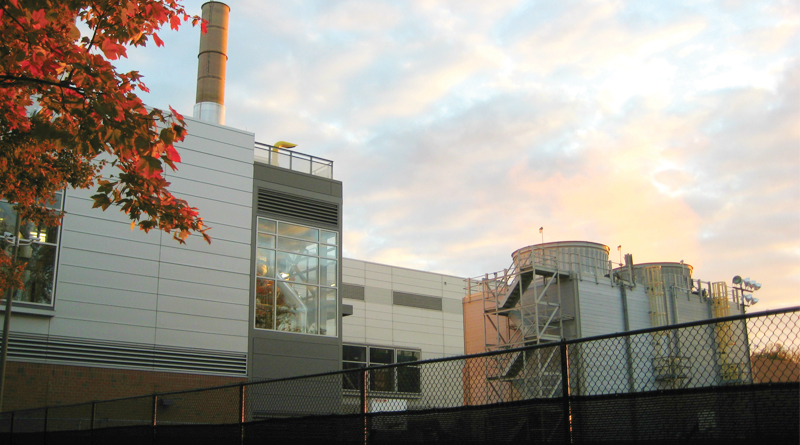Universities Power Green Initiatives
By Steve Hunting
Most universities across the country have established green initiatives. Many of them are implementing combined heat and power systems, a technology the federal government actively encourages, to help them achieve those goals.
In recent years, universities have been responding to the interest of students, professors, donors and community members in their environmental sustainability programs. As an article published in School Construction News last year pointed out, financial pressures are a real issue and sustainability initiatives can help universities reduce operating costs. This is especially important in the new normal after the Great Recession, as state funding for higher education has not fully recovered in many parts of the country.

Combined Heat & Power
Combined heat and power (CHP), also known as cogeneration, is one way universities address sustainability and financial goals. In a nutshell, combined heat and power is an efficient way to generate electricity and thermal energy using a unit of fuel. Some systems do this by recovering the waste heat that results from the generation of electricity by a combustion turbine and using it to generate thermal energy in the form of steam or hot water. Other systems pass high-pressure steam through a steam turbine to generate electricity and then use the steam for other purposes like heating buildings.
The result is the production of substantially more energy from a unit of fuel. The resulting efficiency is almost double that of independent generation of electricity and thermal energy. Combined heat and power systems increase overall energy efficiency from 45 to 55 percent up to 65 to 85 percent, according to the U.S. Department of Energy.
CHP facilities can work with a variety of fuels, including natural gas, biogas and biomass. Combined heat and power is currently used in a number of applications in addition to universities, including manufacturing facilities and large resorts.
Examples of CHP on Campus
North Carolina State University (NC State) in Raleigh installed a CHP system in 2012 in its Cates Utility Plant, replacing an older boiler system that generated thermal energy for building heating and other uses. According to the university’s website, “The renovation of Cates Utility Plant on campus increases the 11-megawatt facility’s efficiency by roughly 35 percent. It is also expected to reduce the university’s greenhouse gas emissions by 8 percent, building on a 7 percent reduction from 2008 to 2010 and moving NC State closer toward its goal of climate neutrality by 2050.”
In 2016, Emory University embraced CHP by installing a new steam turbine at its existing steam plant on campus. As an article by Emory’s Sustainability Initiatives team stated at the time, “Emory is thrilled to include cogeneration in its energy-use portfolio and efforts to reduce its carbon footprint. Although it does not entirely cancel Emory’s utilization of fossil fuels, it’s one important step because now we’re making more efficient use of those resources.”
Federal Support for CHP
The U.S. Environmental Protection Agency (EPA) touts the benefits of combined heat and power. The agency emphasizes the efficiency gains that result in burning less fuel. “CHP reduces emissions of greenhouse gases and other air pollutants,” according to an EPA fact sheet.
The EPA has a CHP Partnership program through which it works to facilitate the development of new CHP projects. The program has more than 400 partners, including universities in New York, Iowa, Utah and California.
The U.S. Department of Energy recently announced the commitment of $25 million to continue its support of regional CHP Technical Assistance Partnerships (CHP TAPs) at eight locations around the country, six of which are at universities in North Carolina, New York, Pennsylvania, Illinois, Maine and Washington. According to the Department of Energy, this approach “can support U.S. economic competitive advantage, promote economic development, instill resiliency in businesses and communities, create and maintain local energy-related jobs, and provide solutions for modernizing energy generation and delivery.”
To read the entire article, check out the March/April issue of School Construction News.
Steve Hunting is an attorney with Parker Poe Adams & Bernstein LLP. He focuses on energy and technology projects and transactions, and advises universities, among other clients, on combined heat and power, energy storage and microgrid projects from the firm’s Charlotte, N.C., office.

